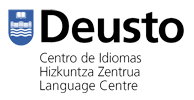Title
- The title of the report summarizes or clearly states the aim of the report.
- Details of the person(s) for whom it is intended can be provided under the title.
- Details of the persons who have prepared the report can also be included.
- Additional details (date of presentation, venue etc) may be provided too.
Acknowledgements (if appropriate)
- If a person or an organization has helped you in some way to prepare your report you should mention their name and thank them.
- You can briefly explain how they have contributed to your report.
Table of Contents
- This includes a list of the sections in the report. Subheadings can be provided.
Abstract
The abstract is a summary of the report, in which you include one sentence (or so) for every main section of your report. For example, you can include:
- The context of your report
- The purpose of your report
- Findings
- Conclusions and / or recommendations
The abstract is written once you have finished your report.
Introduction
- Explains the aim of the report, why it is written
- Gives background information to create a context
- Lays out the points that will be dealt with
- Limits the scope of the report, explains what it will cover
- Mentions the sources used
- The introduction should never be longer than the development
Body
The content is directly related to the purpose of your report. There are two types of reports: reports based on primary research (your own observations and experiments) and secondary research (based on reading only)
A report of primary research would include:
- The state of the matter: what other people have written about this. Your choice of literature should be relevant to your research question.
- Procedure: what you have done and why
- Findings : what you have discovered, observed …
- Facts and figures, graphs and tables are common when you present what you have done, what you have observed …
- Discussion: relate, compare and discuss your results and previous research
A report of secondary research (based on reading only) includes:
- Material from different sources synthesized under subheadings. The sources used should be relevant
- Analysis/discussion of the sources reported.
Conclusion
- It summarizes the main points presented and the conclusions reached. The conclusion restates the objective of the report.
- No new information is presented in the report. Any new ideas should have been presented before.
Suggestions/Recommendations
- Read the task given and decide if it suggestions/recommendations are needed. If in doubt, always check with your instructors.
- The recommendations have to be derived from the body of your report, and therefore, related to the information presented in it.
Appendices
- An appendix contains material (a questionnaire, a table) which has been used or is referred to in the report, but which cannot be included in the report itself because it is too detailed or complex.
- It is advisable to number each appendix.
Bibliography
- This section will include the literature you have used to write your report.
- Make sure you know how to present your bibliographic references.
Glossary
- A glossary or alphabetical list of the abbreviations used in the report can be provided, especially if you think readers will not be familiar with the abbreviations and / or acronyms used.
The Hong-Kong Polytechnic University: http://www2.elc.polyu.edu.hk/cill/reports.htm
University of Wollongong: http://unilearning.uow.edu.au/report/1c.html
